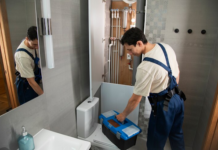Are you a blogger who writes on multiple topics? Or maybe you have several blogs that you would like to combine into one entity. We will teach you how to combine different blogs under one name, whatever the case may be. By following the steps outlined below, you can create a unified online presence for your business and make it easier for your readers to find all of your content in one place.
1. Choose a New Name for Your Unified Blog
If you’re going to combine multiple blogs into one, you’ll need to choose a primary blog name. That is the name you will use for your new, combined blog. Think carefully about this decision, as it’s not something you can later on easily change.
This name should reflect the overall theme or topics you cover in your writing. For example, if you’re a food blogger who writes about both cooking and baking, you might choose the name “The Recipe Box” for your combined blog.
2. Set Up A New WordPress Site (Or another Platform of Your Choice) Using the Chosen Name
Now that you have a name picked out, you’ll need to set up a new WordPress site (or use another platform if you prefer). If you’re not sure how to do this, check out our tutorial on starting a WordPress blog.
If you’re using WordPress, this is as simple as creating a new site at WordPress.com or installing WordPress on your web hosting. Choose a theme and design that you like and that will be easy for your readers to navigate. Incfile can help you apply for LLC for your business. We provide a free consultation to answer all your questions and guide you through the process.
3. Start Transferring Your Old Blog Content
Once your new site is set up, it’s time to transfer your old blog content. Using WordPress, you can use the built-in export and import tool to quickly transfer all of your posts and pages from your old site to your new one. It makes this process relatively painless. Export your old posts from each blog and then import them into your new WordPress site.
If you’re not using WordPress, you’ll need to copy and paste each post into your new site manually. Be sure to include any photos or images that were part of your original posts.
4. Set up Redirects from Your Old Blog Urls to Your New Site
To avoid losing any traffic from your old blogs, you’ll need to set up redirects from the old URLs to the new ones. You can host your control panel to do this.
Using WordPress, you can use the built-in redirection feature to automatically redirect visitors from your old blog to your new one.
If you’re not using WordPress, you’ll need to set up a permanent (301) redirect from your old site to your new one. It will ensure that anyone who tries to visit your old blog will be automatically redirected to your new site.
5. Promote Your New Site
Now, it’s time to promote your new site! Be sure to let your readers know about the change and provide them with the new URL. You can also promote your website in your email newsletter, your social media platforms or on other websites and blogs. That will help ensure that people can still find and follow you even after making the switch.
6. Update Your Old Blog Posts
Once you’ve transferred all of your old content to your new site, you’ll need to update your old blog posts. That includes changing any links or references to the old URL to the new one. You can do this manually or use a plugin like Better Search and Replace to help automate the process.
7. Delete Your Old Blogs
Finally, once everything has been successfully transferred to your new site, you can delete your old blogs. It will ensure no confusion about which site is the “true” one. Using WordPress, you can delete the individual sites from your multisite network. If you’re not using WordPress, you’ll need to delete the files from your web server.
Conclusion
By following the steps above, you can easily combine multiple blogs into one and avoid losing any of your existing traffic or readers. Take your time, plan everything out carefully, and update your old blog posts to reflect the new URL. It will create a unified online presence for your business and make it easier for your readers to find all of your content in one place.












